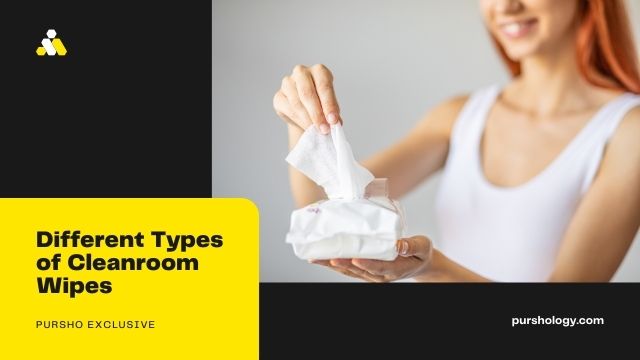If you are looking for a product that will eliminate the need for multiple cleaning supplies, you can find many options for cleanroom wipes. ReFIBE wipes are made from recycled polyester and are available in 9×9” and 12×12” sizes. ReFIBE wipes are available in different color combinations and have many benefits over the traditional terrycloth wipe. Elevate your hygiene routine with the added convenience and protection of Disinfecting Hand Wipes, ensuring a thorough clean in every swipe.
The experts at Harmony have done their homework with over 15 years of experience as a supplier of speciality swabs, wipes, and safety gear. Founded in 2006 in the state of California, they are a master supply distributor for scientific, industrial, and technological environments.
Sealed edge
Superior’s Sealed Edge Wipes have laser-cut edges for low particle emissions and are ideal for cleanroom environments. They are made from ultra-pure wiper substrates and 18Mohm DI water. They are light and reusable, making them the best choice for a variety of cleanroom applications.
The TX59 Vertex Sealed Edge Cleanroom Wiper is made from 100% polyester and has four times more fiber than standard wipes. This provides a soft hand and increased abrasion resistance. It is also excellent for wiping surfaces that are prone to scratching. It also captures microbes that are present on surfaces. Another option is TechniSat wipes, which incorporate pre-wetted fabric blend and nonwoven hydroentangled cellulose. These wipes have excellent absorbency properties, low particle count, and are compatible with Class 1 and 10 cleanrooms.
Knife cut
Knife cut cleanroom wipes are a popular choice for cleanrooms that require a high level of cleanliness. They are made from a durable, no-run interlock knit fabric that has a knife-cut edge. They are double bagged to ensure product integrity and come with lot numbers for traceability. They are ideal for equipment wipe-down applications and are suitable for use in ISO Class 5 and ISO Class 4 cleanrooms.
While knife cut cleanroom wipes have a nonabrasive edge, they are not very effective at retaining particles. This makes them an economical option for many cleanrooms, but their lack of particle retention means that they’re not recommended for critical jobs.
Laser sealed
Laser sealed cleanroom wipes are an excellent choice for controlled environments where cleanliness is a top priority. These wipes are 100% continuous filament polyester with laser-sealed edges and are highly absorbent. They are made in ISO-compliant facilities and feature superior odor control and chemical compatibility.
Laser sealed edges are formed by cutting the edges of the wipes with a heat laser. This creates a clean cut and seals the edges. These wipes tend to have moderate particle retention. Nonetheless, they offer a higher degree of protection than border seal wipes.
Recycled materials
Recycled materials for cleanroom wipes are an excellent option for a number of reasons. The first of these is that they can help reduce the amount of waste in a facility. For example, ReFIBE wipes are 100% recycled polyester, which makes them a sustainable single-use option for life sciences, pharmaceutical, and medical device applications. They also perform just as well as traditional polyester wipes without compromising on quality.
Most cleanroom wipes are made of non-wovens composed of a polyester-cellulose blend. These are good all-purpose cleanroom wipes, since they combine the high absorbent properties of cellulose with the strength of polyester. However, they are not as soft or durable as synthetic wipes, making them more suitable for less-critical ISO 5-8 environments.
Absorbency
Cleanroom wipes are commonly made from nonwoven polyester cellulose. The material is a cost-effective choice and boasts high absorbency. The drawbacks of this material are that it tends to release particles into the environment. However, it is an excellent choice for cleanrooms that do not require tight restrictions on air particulate levels. Another option is nonwoven polypropylene, which is inexpensive but not very absorbent. Most nonwoven wipes are single-use disposables. Hybrid non-woven wipes are made from a blend of polyester and cellulose fibers.
Absorbency is a crucial criterion for choosing wipes for cleanrooms. There are a variety of test methods to evaluate the performance of wipes. The most common method involves exposing the wipe to water and measuring its absorbency and release. A well-engineered wipe will have a high absorbency and minimize the amount of liquid evaporation. Wipes with a high level of absorbency should also have a low ionic contamination.
Softness
When selecting cleanroom wipes, softness is an important factor. It determines how well the wipe will retain liquid. Soft wipes are preferred for cleanrooms that have sensitive surfaces. Soft wipes are often made of synthetic fibers. They are also more abrasion-resistant. Wipes also must be free of silicone, which is an allergen. Silicone can cause allergic reactions, so wipes without this ingredient are a good choice for microelectronics.
Cost
Cleanroom wipes are made of highly absorbent materials and can be used to remove particle pollution in sensitive environments. They can also be sterilized and presaturated. These wipes are typically used in Class 100 to 10,000 cleanrooms. Some types are specifically designed for these environments, such as nonwoven wipes. These wipes are designed to be highly absorbent and have a high abrasion resistance.
The cost of cleanroom wipes can vary depending on the materials used. Some are made of polyester, which means that they are non-abrasive and resist wear and tear. Another type is made from microfiber, which is ideal for screen and display cleaning.







